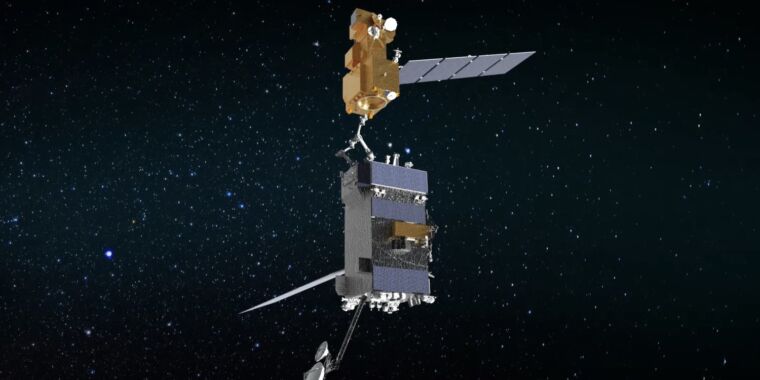
NASA Axes Multi-Billion Dollar Satellite Servicing Demo Mission
What’s going on here?
NASA recently called off the OSAM-1 project, an ambitious initiative intending to showcase robotic satellite servicing technologies in orbit. The project aimed to refuel an older Landsat satellite and demonstrate the usage of a robotic arm for assembling an antenna in space. Despite an initial budget and a clear goal set in 2016, the mission extensively exceeded its budget and timeline, reaching a cost of $1.5 billion with projections nearing $1 billion more for completion. This cancellation followed an independent project review that highlighted ongoing technical, cost, and schedule issues.
What does this mean?
The demise of OSAM-1 signifies a setback in NASA’s experimentations with on-orbit servicing, assembly, and manufacturing. Initially set to launch with the capacity to refuel and construct using robotic technology, the mission had expanded significantly from its original scope to include additional complex objectives. This escalation, often referred to as “mission creep,” led to substantial delays and budget overruns, evolving from an estimated $626 million to $753 million project in 2020 to a situation where costs could have soared up to $2.35 billion. Despite congressional support, this cancellation raises questions about the practicality and management of ambitious space missions amid growing technical and financial challenges.
Why should I care?
The scrapping of OSAM-1 impacts not just the future of satellite servicing but also the broader landscape of space exploration and commercial space endeavors. NASA’s decision to cancel the mission reflects deeper issues within space project management, such as budgeting, scope management, and market relevance. With the satellite servicing market evolving and private companies developing alternative technologies, the relevance of projects like OSAM-1 may diminish over time. This shift could potentially divert future resources and attention towards more viable and immediate technological solutions that align with industry trends, affecting how upcoming missions are designed and executed.
For more information, check out the original article here.




